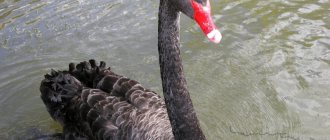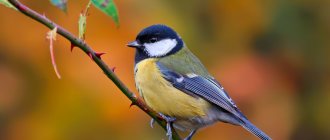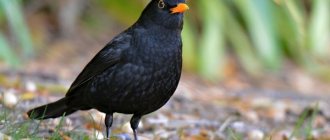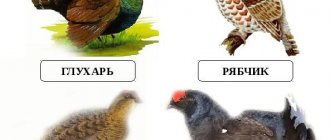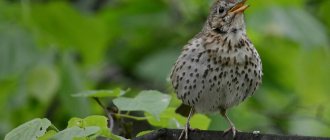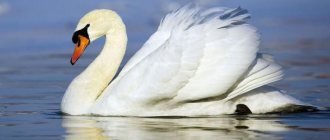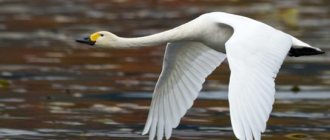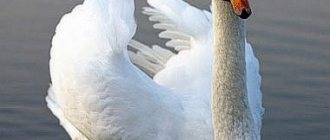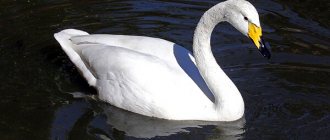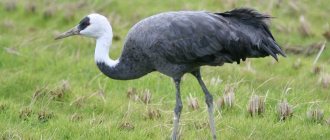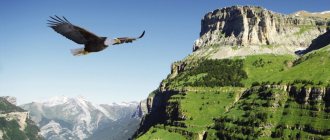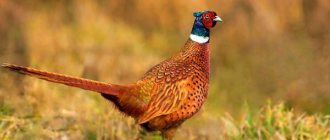The black swan is the only swan that lives in Australia. It was introduced to New Zealand in 1864 and is now found in many European holiday parks. The dry climate of Australia is not favorable for swans, but the black swan has perfectly adapted to the local conditions.
He flies great. This ability is very important, since black swans have to travel considerable distances in search of fresh water and food.
Description of the species
Black swans became known to Europeans only after the discovery of Australia and Tasmania. This is where this beautiful and exotic bird comes from. After the discovery of New Zealand, black swans came to these islands, where they became incredibly popular in private backyards and parks.
The black plumage of birds has a peculiar moire pattern created by the grayish edging of the outer feather.
Some birds have interspersed white or even black and white feathers. It is very common to find representatives of this species with curled flight feathers and shoulder feathers. The beak is bright scarlet. The feet are most often black or blue-black. The young are distinguished by their grayish-brown feather color and light, often pink, beak.
The black swan is a rather large bird. The weight of individual representatives can reach ten kilograms or more, and the wingspan is about two meters. The body length of females does not exceed 110 cm, males - 150 cm.
Representatives of this species have the longest neck among all their relatives, a neat small head and a short, dense tail. The length and structure of the neck allows it to reach food even from great depths.
INTERESTING FACTS, INFORMATION…
- Most species of swans have white plumage: for example, the mute swan. The black-necked swan has a white body, and only its neck and head are black.
- Often during the nesting season you can see a nest with chicks floating on the surface of the lake. The black swan usually attaches its nest to coastal vegetation, but sometimes it detaches from it and swims away.
- Black swans usually fly at night. The flock flies at high altitude in a clearly organized order. The trumpet sounds they make are very well audible even at a very long distance.
- Black swans were brought to Europe in the mid-18th century. In England they have long been considered harbingers of trouble. The reason for this superstition is the black plumage of birds.
Lifestyle
Despite the fact that birds are excellent flyers, they rarely fly. The warm climate allows black swans to lead a sedentary lifestyle, flying to new feeding grounds only as a last resort.
To take off, they need a large open water space - at least 70 meters. The long takeoff run is explained by the heavy weight and structure of the wings.
Black swans live in large colonies and this makes them different from any other species. Often a colony numbers up to 50 pairs. They are very tolerant of their neighbors and rarely show aggression. Different individuals constantly communicate with each other using loud guttural sounds.
In nature, birds have almost no enemies among animals: they are so strong that they can even drive away a dingo. However, young animals are often hunted by reptiles and birds of prey.
The swans' diet consists of small algae, aquatic vegetation, grass and young shoots of bushes growing near the reservoir. They can also feast on fish fry, small amphibians, crustaceans and invertebrates. A colony of birds prefers to settle near open and non-swampy bodies of water, on the banks of slow-flowing rivers or on the sea coast.
If there are agricultural fields with wheat, corn or barley crops near the nesting site, the birds will raid and eat part of the seedlings and ripened crops.
Difficulties of breeding at home
If desired, black pigeons can be bred at home, but you need to know some rules for keeping this bird.
Poultry house
In order for the bird to adapt, it is important to create conditions for it that are as close to natural as possible.
In the summer, this can be a shelter house where the birds will stay day and night. It looks like a booth on the water. For two swans, the area should be 1 square meter across the floor. The roof should be insulated with straw, as should the floor. There must be food and drink in the house.
But for the winter period it is necessary to prepare the poultry house. It is very important that the inside is clean and dry. It is necessary to exclude cracks and drafts. When it’s cold outside, you should take care of artificial heating of the room - this can be warm rugs or heated floors.
The height of the structure should be 2–2.5 m, and the area should be 2–2.5 square meters for two swans. You should put straw, shavings or husks on the floor. The layer thickness should not be less than 10 cm.
Important! To prevent the development of obesity, the daily calorie content for one individual should not exceed 900 kcal.
It is necessary to regularly ventilate the house and clean it of droppings. The litter should be changed at least once every 7 days. Inside, it is necessary to ensure the air temperature is within +16–18°C, and daylight hours in winter should last about 14–16 hours.
Water
Basins and troughs can be used to bathe birds. But in order to be able to reproduce, they need more water space. Of course, it is ideal if there is a pond or it is possible to fence off a small area of the lake.
If there are no natural reservoirs nearby, you need to build it on your territory using available means.
Corral for walking
If there is a natural body of water, then its shore is perfect as a paddock for walking. If the reservoir is artificial and located on the site, you will need to arrange the enclosure yourself: plant a lawn around the water on which meadow and garden greenery will grow.
How to cope with winter cold
Black swans do not tolerate frost very well. Since they have loose plumage, this deprives them of resistance to low temperatures, unlike other breeds. They need warmth to reproduce and be healthy. Frostbite can cause paw injuries, infections, and sometimes death.
Reproduction
Swans form pairs at the age of two to three years and remain faithful to their partner throughout their lives. The breeding season begins with the arrival of rains: this is due to a rise in water levels and an increase in the amount of food. The mating season begins with beautiful dances: one of the partners spins, gracefully shaking his neck and showing off his plumage. When the second partner joins the game, both birds begin to move in sync, stretching their necks, spreading their wings, and swimming. Usually the dance lasts no more than half an hour and ends with mating.
Both partners take part in the construction of the nest. The nest is built from stems, leaves, dry grass and fluff. Most often they choose a place in shallow water or at the very edge of the water. If there is an abundance of food, the pair will use one nest for several years. There are usually no more than seven eggs in a clutch. The incubation period is one and a half months.
Both the male and the female incubate the eggs. For the first two days, the chicks remain in the nest.
On the third day, they follow their parents in search of food, and spend almost all their time on the water. The young begin to fly on the wing after the first adult molt - at four to five months, and remain with their parents until the next breeding season.
WHERE DOES IT LIVE?
The black swan easily adapts to different conditions. This is the only swan living in Australia. With the exception of the mating season, it can be found throughout this continent. It feels great in places where there are bodies of water. During the nesting season, swans can be found near large, shallow freshwater lakes or other bodies of water. At other times, they often appear in sheltered sea bays, lagoons and on the seashore. Black swans fly beautifully. They can fly across the entire Australian continent, stopping near bodies of water. Under favorable conditions, flocks remain in one place throughout the year. The main thing is that there is enough food in these places and there are places convenient for making a nest. Black swans stop most willingly near shallow bodies of water.
Swans protection
With the discovery and settlement of the continent, birds began to be actively exterminated: they were hunted everywhere for their beautiful feathers, down and meat. This led to the fact that the subspecies almost completely disappeared. At the beginning of the last century, the governments of Australia, Tasmania and New Zealand entered into an agreement under which the shooting of black swans is strictly prohibited and the species is protected. The creation of reserves and work to restore the population led to a rapid increase in the number of swans.
Today the subspecies is no longer in danger of extinction. In some areas of Australia and New Zealand, swarms have become so large that they are causing irreparable damage to rural fields. Therefore, authorities issue licenses for shooting a certain number of birds.
Links[edit]
- ^a b in BirdLife International (2012). » Cygnus atratus » . IUCN Red List of Threatened Species
.
2012
. Retrieved November 26, 2013. Old form URL - ^ B s d e g h i Pizzey, G. (1984). A Field Guide to the Birds of Australia. Sydney: Collins. paragraph 66. ISBN 0-00-219201-2.
- Smith, Colleen (2018-12-05). “So why are there black swans in Dawlish?” . DevonLive
. Retrieved December 26, 2022. - "Cygnus atratus - Black Swan (species)". wildlife1.wildlifeinformation.org. Archived from the original on 2011-09-30. Retrieved October 17, 2011.
- ^ abc Falla, RA; Sibson, R. B., & Turbott, E. G. (1981). A New Guide to the Birds of New Zealand and the Outlying Islands
. Auckland: Collins. p. 80. ISBN 0-00-217563-0. - Jump up ↑ Waterfowl in New South Wales
, op. cit.: 25, 37–39. - Rousos, Rick (December 27, 2002). "Mutant swans could mean hundreds of dollars for city". Lakeland Ledger
. Retrieved February 19, 2014. - Waterfowl in New South Wales
. Sydney: CSIRO and New South Wales Fauna Panel. 1964. pp. 11–12. - ^ abc Scott, Sir Peter, ed. (1982). Atlas of Birds of the World
. Balmain: Colporteur Press. pp. 200–1. - Narena Olliver (2010-10-28). "Black Swan (birds of New Zealand)". nzbirds.com. Retrieved October 17, 2011.
- "BirdFacts - Black Swan". BTO. Retrieved November 6, 2009.
- "Archant - Inspiring Communities". Archived from the original on 2015-05-02. Retrieved July 21, 2015.
- Dawlish Live! (Retrieved March 7, 2009)
- ↑
Invasive Species of Japan: Cygnus atratus Retrieved July 27, 2016 - ↑
Brazil, Mark Beauty and the Environment, July 5, 2001,
last
accessed from
Japan
July 27, 2016. - ↑
Swan dive into a strait that divides economic views February 21, 2011, published in
Japan Times
Retrieved July 27, 2016 - https://www.ocregister.com/2020/10/05/why-are-so-many-black-swans-native-to-australia-showing-up-in-local-waters/
- "Black Swan - Cygnus atratus" (PDF). Florida Fish and Wildlife Conservation Commission
. April 6, 2022. Retrieved April 6, 2022. - Rihanna
Morrison, Jeremy (August 27, 2014).
"Malcolm's Swan Song". Smoky Mountain News
. Retrieved June 8 +2017. - Stevens, Andrew. "China's Silicon Valley: Lawns and swimming pools, but no free food". CNN Business
. CNNMoney. Retrieved April 6, 2022. - Scott 1972, p. 75.
- ↑
Scott, 1972, pp. 59–60. - Kraaijeveld, Ken; Gregurc, John; Hall, Carol; Komder, Jan & Mulder, Raoul A. (May 2004). "Reciprocal decoration, sexual selection, and social dominance in the black swan". Behavioral Ecology
.
15
(3): 380–389. DOI: 10.1093/beheco/arh023. - Kraaijeveld K, Carew PJ, Billing T, Adcock GJ, Mulder RA (June 2004). "Extra-pair paternity does not result in differential sexual selection in the mutually ornamented Black Swan ( Cygnus atratus
)."
Mol. Ecol
.
13
(6): 1625–33. DOI: 10.1111/j.1365-294X.2004.02172.x. PMID 15140105. S2CID 6934753. - ↑
Homosexual Animals in the Closet, November 16, 2006,
LiveScience
Retrieved August 8, 2016. - Jump up
↑ Braithwaite, L. W. (1981).
"Ecological Studies of Black Swan III - Behavior and Social Organization." Australian Wildlife Research
.
8
: 134–146. DOI: 10.1071/WR9810135. - Jump up
↑ Braithwaite, L. W. (1970).
"Black Swan". Australian Natural History
.
16
: 375–9. - Same-sex sexual behavior in birds: expression linked to social mating system and developmental state at hatching (2007) 18(1):21–33. DOI: 10.1093/beheco/arl065 Behavioral Ecology
Retrieved August 8, 2016 - ↑
Black Swans archived March 9, 2007, at the Wayback Machine (at About.com) - Scott 1972, p. 99.
- Scott 1972, p. 103.
- Scott 1972, p. 101.
- Scott 1972, p. 109.
- Department of Employment, Districts and Regions (11 May 2022). "Information not related to bird games". Game Management Authority
. Archived from the original on June 18, 2022. Retrieved September 27, 2020. - Fraser, Gina (2015). HERITAGE IN NAMES - The origin and meaning of street names and place names in the City of South Perth (PDF). paragraph 51.
Works Cited
- Scott, Peter (1972). Swans
. London: Michael Joseph. ISBN 978-0-7181-0707-9.
Black swans in legends and dreams
There are quite a few interesting facts and legends associated with black swans. One of them says that these birds are inhabited by the souls of deceased ancestors wandering through the heavens. The color of the swan also played a large role in the legends of aboriginal peoples: black symbolizes various sacraments, death, the afterlife and intuition.
The black swan has found its place in dream books. Seeing a bird in a dream means:
- Doubts and dubious connections,
- Unpleasant meetings
- Betrayal of friends
- Development of intuitive abilities,
- For a woman: worries and household chores,
- For a man: parting with his beloved, travel, departure,
- Loneliness and the search for one's spirituality.
A dreamed chick means unrequited love, and a pair of birds means resolution of conflicts and unpleasant situations. Flying swans in a dream - to wealth and power. But if you dreamed of a black and white swan, you need to expect losses, troubles, fuss and regrets. Very often, a dream with a black and white bird means that a person is dependent on someone or something, under the power of circumstances.
Social behavior
The legend of swan fidelity fully reflects the interaction in a pair of black swans: these birds form pairs for life. Within a group of swans, very close, in the literal sense of the word, relationships are also built. And they all fly together to feed, and build nests, and hatch chicks very close to each other. During the nesting period, black swans gather in colonies consisting of several hundred pairs of birds (swans are usually considered to be pairs). However, adult males can sometimes drive away the young, defending their territory during nesting. The male and female build the nest together, and they also share incubation time with each other.
Black Swan theory
Many people have heard about the “black swan” theory, but not everyone knows what this term means. The theory was developed by Nicholas Taleb and is based on the fact that the very idea of a black swan was considered absurd for many centuries. Despite the fact that references to these birds can be found in various sources, before the discovery of Australia, the black swan was more of a mythical creature. The discovery of a real bird with black plumage came as a real surprise to European ornithologists.
That is, the meaning of the theory: the absolute unpredictability of the development of any event.
He described the meaning of his theory in the book “Fooled by Accidents.” In it, he examines in detail what unpredictability is and the magnitude of random consequences that can occur. The author extends the concept of unpredictable events only to those that meet the following requirements:
- Surprise,
- Significant consequences
- Possibility of explanation after the event has occurred.
The term and expression “black swan” refers to all global scientific discoveries and historical events, economic crises and booms.
